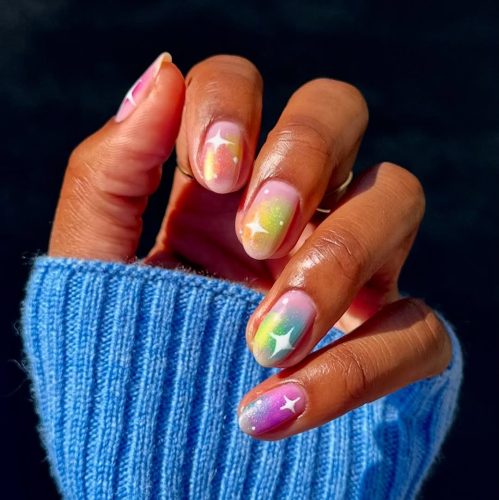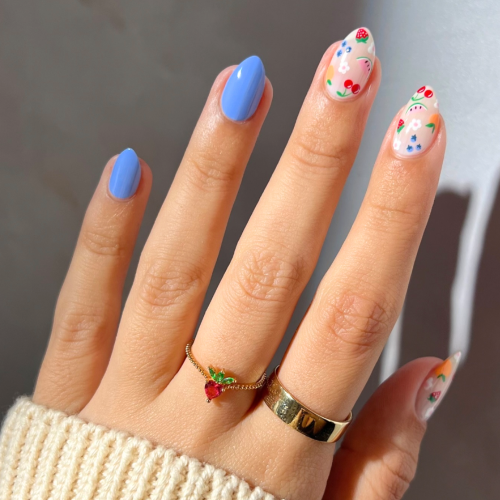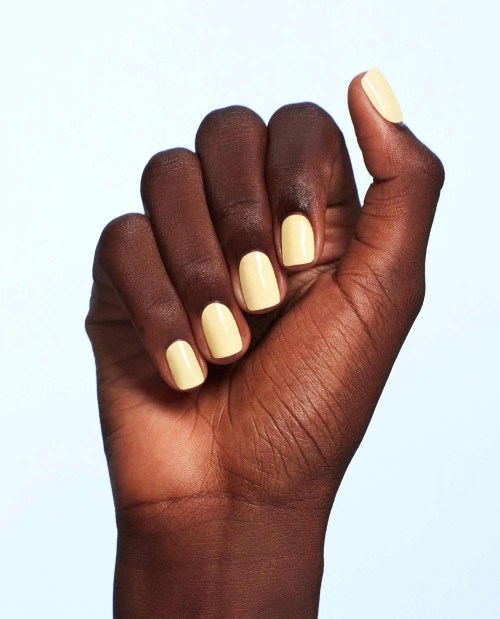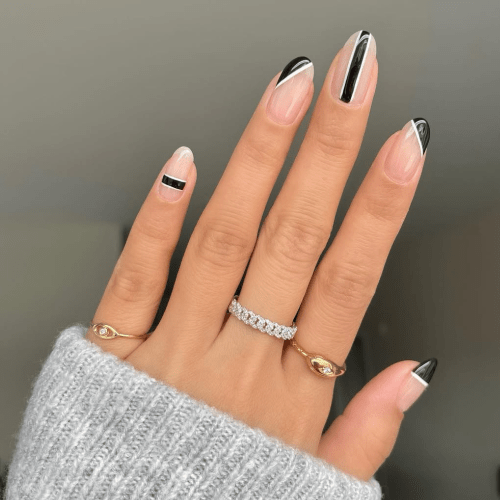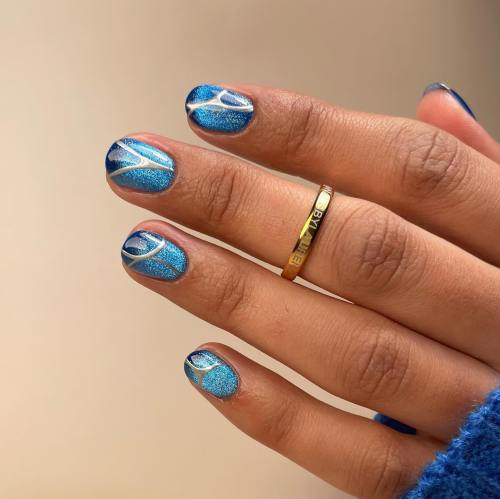Here’s How To Clean Your Toenails For Happy, Healthy Feet
Two experts explain how to properly clean toenails, how often you should do this, and what happens if you don't (gulp). Here's what to know.

Be honest: When was the last time you thought really hard about your toenails? If your answer is hardly never, besides deciding what color your next pedicure should be, you’re not alone. However (not to step on your toes or anything), keeping your toenails clean is an important part of your overall well-being. “It is important to take care of all parts of our bodies, toenails included,” podiatrist Stephanie Kvas, DPM, D.ABFAS, says. “Neglected fungal infections or ingrown toenails can lead to serious complications that could even result in hospitalization or surgery.”
Experts in This Article
board-certified dermatologist and nail specialist
podiatrist and member of the Vionic Innovation Lab
a podiatrist in Minnesota.
aesthetic podiatrist and podiatric foot surgeon
Think about it: your feet are responsible for getting you around and keeping you grounded (literally), and even if you’re only walking between the rooms of your home, the area underneath your toenails can still collect all sorts of gunk. “Toenails can get very dirty, and more so if you’re barefoot,” says podiatrist Jacqueline Sutera, DPM. “This happens because your toes are more directly exposed to elements such as dirt, dust, oil, food, lint, hair, and carpet fibers.” Dr. Sutera adds that your toenails are susceptible to trapping sock lint, moisturizer, nail polish, and skin debris, noting that she has previously removed all of these items from patients’ toenails.
Still, keeping your toenails clean don’t have to be yet another daunting task added to your already-overflowing to-do list. Ahead, Dr. Kvas, Dr. Sutera, Suzanne Levine, D.P.M., RPT, PC, an aesthetic podiatrist and board-certified podiatric foot surgeon, Dana Stern, MD, a board-certified dermatologist specializing in nail health, break down everything you need to know about keeping your toenails clean and healthy.
What is the gunk that builds up under my toenails?
According to Dr. Levine, any unusual thickness or buildup under the nail is probably a fungus. “If you notice white or yellow debris under the nail, it’s probably the result of a fungal infection known as onychomycosis,” she says. This infection happens when tiny fungal spores get trapped between the nail plate and the nail bed, and it shows up as white or yellow debris under your toenail.
While your fingernails are prone to getting debris stuck underneath them, you probably wash your hands more than your feet, making your poor toes more prone to pain or infection. However, Dr. Stern says that you’re more likely to experience these issues if there is some damage to your nail bed already. “Generally, the nail plate is hard and protective, so it prevents excessive dirt and organisms from entering beneath the nail,” she says. “But this all depends on if your nails are healthy, at an appropriate length, and firmly adherent to the bed.”
How do you get rid of buildup under your toenails?
Cleaning your toenails at home regularly is the best way to prevent buildup over time. However, if you’re already dealing with debris buildup under the nail, you should get the help of a professional, and if you’re going in on your own, be cautious. “It may be tempting to clean the debris out with a cuticle pusher or similar instrument, but by doing so, you can damage the nail bed and create an entry point for bacteria,” shares Dr. Kvas.
While toenail buildup is often best addressed by a medical professional, DIY remedies such as antifungal vinegar soaks, tea tree oil applications, and baking soda pedicures can be a good place to begin. According to Dr. Kvas, proper toenail and foot hygiene always starts with the at-home basics: frequent washing, trimming, and consistent inspections of your feet and nails for anything out of the ordinary.
“When bathing or showering, be sure to clean the soles of your feet and between the toes,” shares Dr. Kvas. When you want to give your toes targeted care, you can follow a few simple steps:
Soak your toenails
You can soak your feet in warm water and Epsom salt or vinegar for up to fifteen minutes to help soften the skin and nails.
Time to scrub
After soaking, you’ll want to use a soft brush to gently scrub your toenails horizontally (Dr. Levine says this helps stimulate the cuticles and increase circulation). This is also when you should physically exfoliate your feet, removing hard skin and making sure everything is soft.
Rinse, dry, don’t repeat
Damp feet can encourage fungal growth, so make sure your feet are completely dry before putting on your socks and shoes (or proceeding to the following steps if you’re going all the way).
Trim your toenails
Frequent, proper nail trimming reduces your risk of ingrown toenails or bacterial infections. When trimming your toenails, cut straight across the nail and avoid cutting into the sides, as this can create an ingrown nail.
Moisturize
As a final step, you’ll want to apply a moisturizer or foot cream—make sure your feet are completely dry before you rub it in to prevent fungal growth. To moisturize your cuticles, layer on a cuticle oil like L’Occitane Strengthening Shea Nail and Cuticle Oil ($11).
What is the best way to clean my toenails?
You don’t need anything fancy to keep your toenails clean, and Dr. Kvas says a soft bristle nail brush, toenail trimmer, and a classic emery board file are all the tools you need to maintain clean nails.
“Soft-bristled brushes are a great way to clean gently beneath the edge of the toenail without causing any injury or separation of the nail bed,” she says. “Toenail-specific trimmers are generally larger, have a sharper cutting edge, and less curvature. This design is beneficial since trimming the toenails straighter across can reduce the risk of ingrown toenails. An emery board is a great addition if you want to smooth or add more shape to the toenail after trimming.”
How can I tell if my toenails are healthy?
According to Dr. Levine, healthy toenails are typically pale in color, reflecting the nail bed and blood supply under the nail. “To test for a healthy nail, apply pressure. The color should disappear, then reappear when you relieve the pressure,” she says.
You may also notice a small, white half-circle at the base of your nail. This is called the lunula and is a healthy detail. Other physical signs of healthy (or unhealthy) toenails? “Nails often have small longitudinal ridges,” Dr. Kvas explains. “Ridges that are transverse or horizontal are less common and can result from trauma to the nail or underlying health conditions. Generally, healthy toenails should not have dark or yellow discoloration, thickening, peeling, flaking, or debris beneath the nail.”
Can I use hydrogen peroxide to clean my toenails?
If a fungal infection is recognized early and is fairly mild, daily hydrogen peroxide application may help prevent it from worsening. But while hydrogen peroxide has mild antifungal properties, experts don’t recommend using it exclusively to treat or clean toenail fungus.
How to have (and maintain) clean toenails
Keep ’em short
When you give yourself a pedicure, cut your toenails short but not too short. “Keeping them short by cutting them straight across and leaving a tiny bit of white tip is important,” says Dr. Sutera. “If nails are too long, more buildup will occur.”
Be gentle
Dr. Stern notes that overly aggressive cleaning with a tool like a metal nail implement or orange stick can pry the nail off the bed. “This then creates an opening where dirt and debris will collect,” she says. Instead, she suggests using an orange stick to clean the area gently. You can also keep a nail brush in your bathroom and gently clean your toes a few times weekly.
Keep those cuticles
You may hear that you shouldn’t cut your cuticles when getting a manicure, but this is especially true with your toenails. “The cuticle is the nail’s natural protective seal and protects the entire nail unit from entry of water and organisms,” says Dr. Stern. If you want to groom your cuticles, she says the safest option is to soak your feet to soften them, then gently push them back with a cuticle pusher or orange stick. Whatever you do—don’t cut them.
BYO nail kit
If you prefer to sit in a nail salon for a pedicure, Dr. Levine notes that it’s always best to bring or use your own manicure/pedicure set when you stop by the salon to help avoid getting an infection.
Wear shoes (and clean socks!)
Don’t go barefoot, especially in public places where you can pick up any number of toenail-based maladies. Dr. Levine also says to change your socks daily and use cornstarch under your feet if they get super sweaty.
Final Takeaway
Your toenails (like any other part of your body) needs love and care to keep them healthy and in good shape. It’s easy to forget about them all the way down there (we’re guilty), but if you make washing, trimming, and cleaning your toenails a regular part of your routine, you’re laying the foundation for healthy, happy feet.
Sign Up for Our Daily Newsletter
Get all the latest in wellness, trends, food, fitness, beauty, and more delivered right to your inbox.
Got it, you've been added to our email list.
